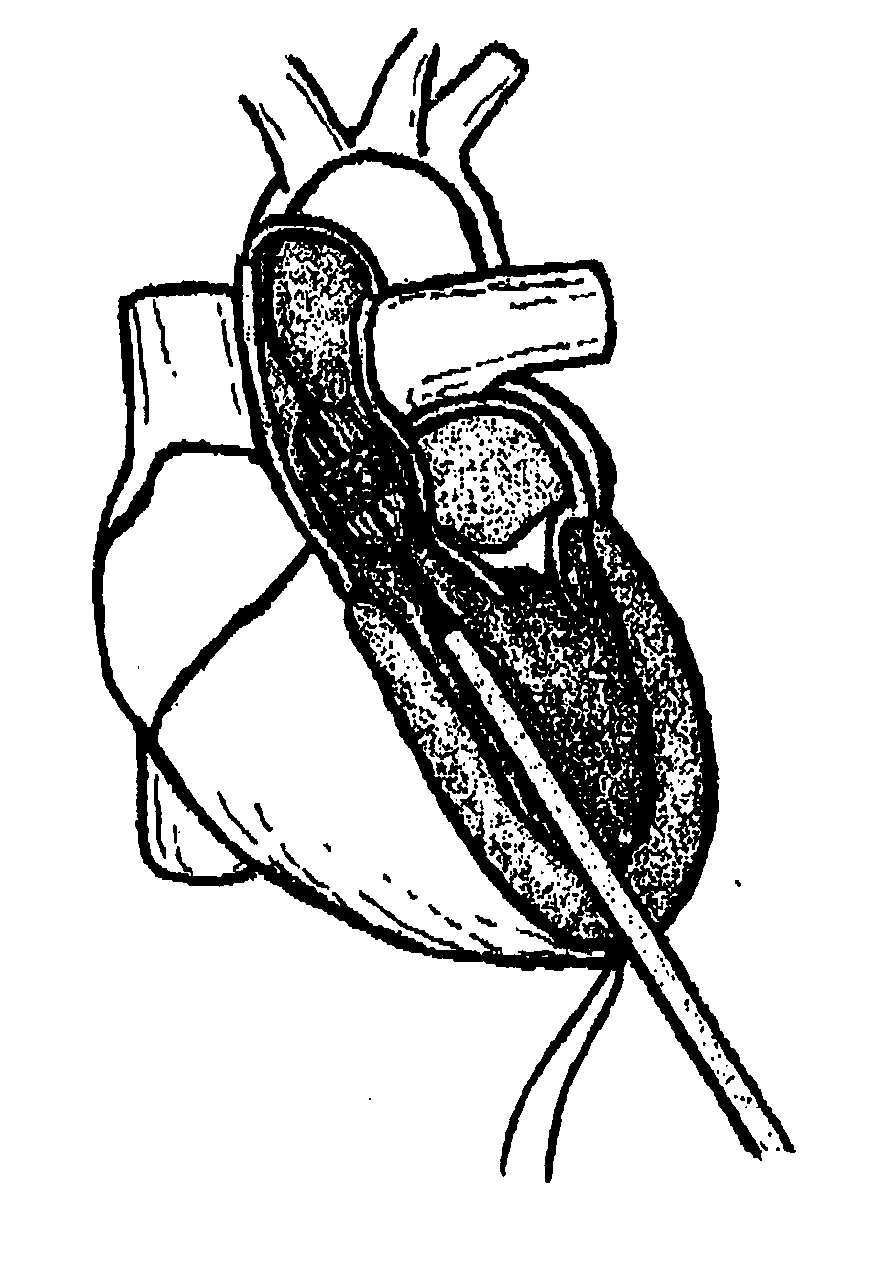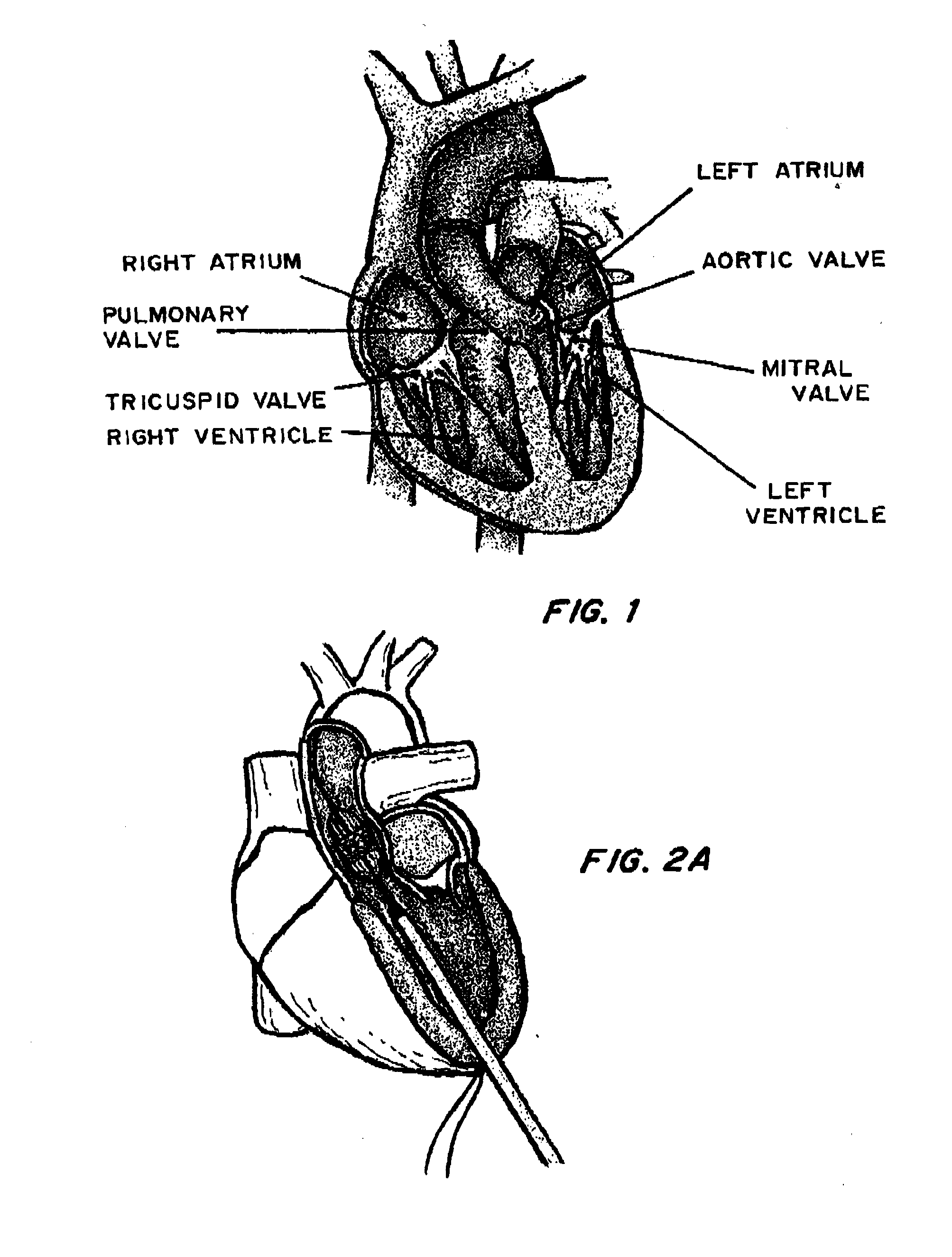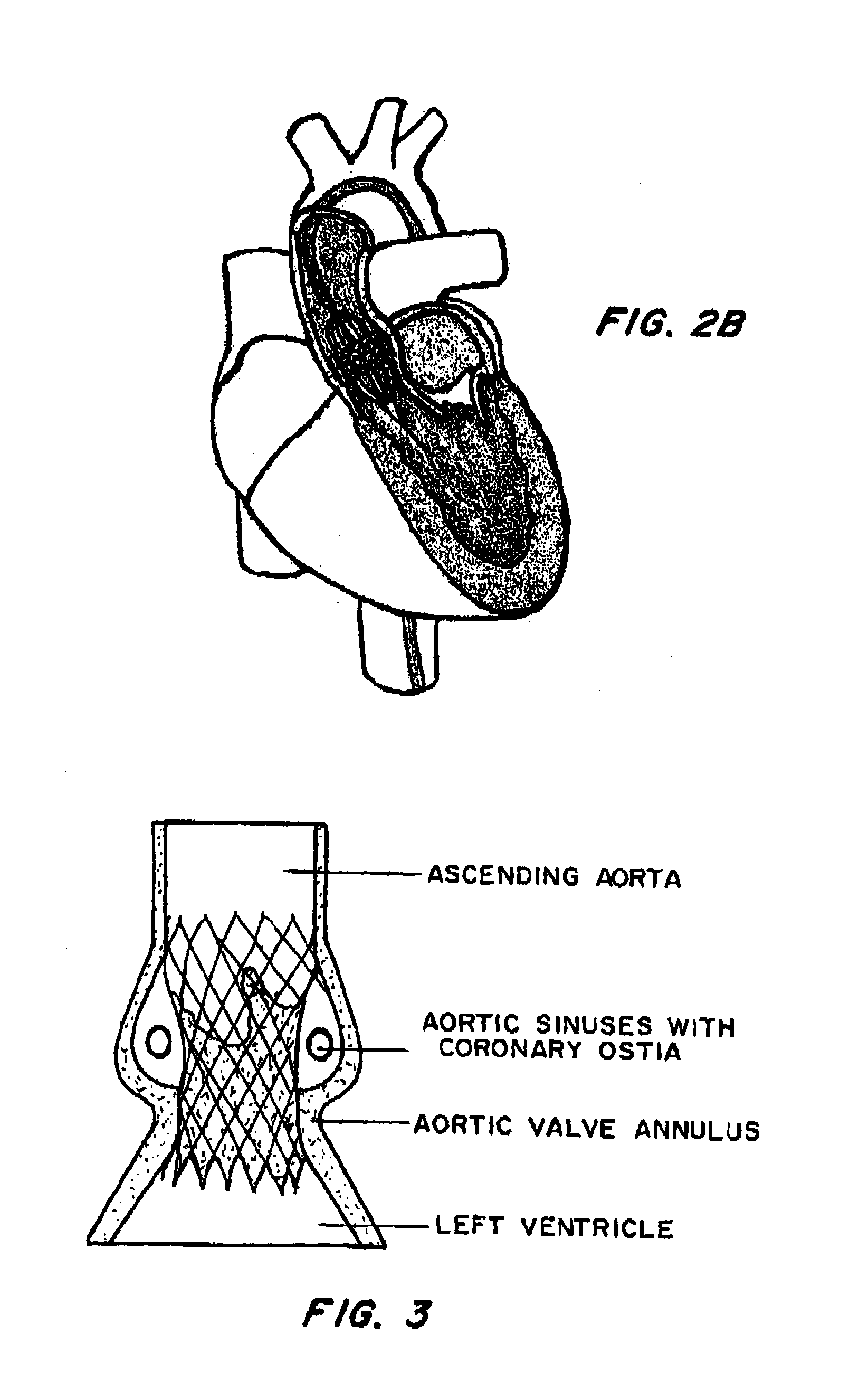Devices to Support, Measure and Characterize Luminal Structures
a luminal structure and device technology, applied in the direction of guide wires, catheters, applications, etc., can solve the problems of life-threatening problems, irregular heart rhythms, and the left ventricle working harder to maintain adequate blood flow through the body, so as to reduce the risk of bleeding and the difficulty of immobilization and closing
- Summary
- Abstract
- Description
- Claims
- Application Information
AI Technical Summary
Benefits of technology
Problems solved by technology
Method used
Image
Examples
Embodiment Construction
[0037]FIG. 1 is a cross-sectional view of the heart. In procedures such as TAVI, a catheter is inserted through an introducer sheath into the chambers of the heart to position a replacement aortic valve over and in place of the existing valve. Different approaches may be used to achieve the same goal, as shown by FIGS. 2A (transapical approach) and 2B (transfemoral approach). FIG. 3 shows the inserted device, positioned between the ascending aorta and the left ventricle, at the annulus.
[0038]Commercially available values include the Medtronic CoreValve® and the Edwards Sapien™ THV. The CoreValve® system is a self-expandable nitinol stent with an inner porcine pericardial valve, designed to sit into the aortic root and to anchor into the aortic annulus. However, the valve function is more supra-annular and a skirt of pericardium, bordering the lower portion of the stent-valve, prevents paravalvular leaks. The valve is available in two sizes, the 26 mm and the 29 mm, and the delivery ...
PUM
 Login to View More
Login to View More Abstract
Description
Claims
Application Information
 Login to View More
Login to View More - R&D
- Intellectual Property
- Life Sciences
- Materials
- Tech Scout
- Unparalleled Data Quality
- Higher Quality Content
- 60% Fewer Hallucinations
Browse by: Latest US Patents, China's latest patents, Technical Efficacy Thesaurus, Application Domain, Technology Topic, Popular Technical Reports.
© 2025 PatSnap. All rights reserved.Legal|Privacy policy|Modern Slavery Act Transparency Statement|Sitemap|About US| Contact US: help@patsnap.com



